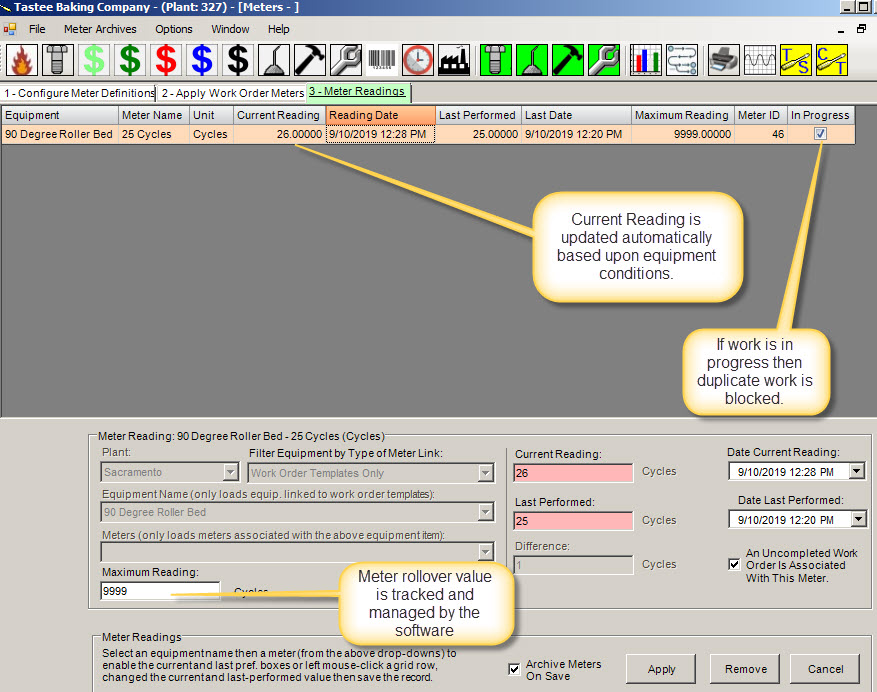Condition-Based Maintenance | Work Orders By Equipment Demand
Condition-Based Maintenance Made Easy!
Wouldn’t it be great to have your equipment tell you when it needs maintenance by automatically creating the right work order for the job at exactly the right time? Does this sound too good to be true? Well this is basically what defines condition-based maintenance and it is a basic feature that is widely used in MaintSmart CMMS Software. In fact, you can also generate work orders based on schedules that you define too. This post seeks to provide a general overview of work orders by equipment demand. A subsequent post describes the scheduled method for automated work orders.
What is Condition-Based Maintenance?
Condition-based maintenance generally uses sensors to indicate when a machine component needs maintenance. In the case of MaintSmart this sensor data (via OPC) is sent to the CMMS and the software then uses the data to determine if the machine needs maintenance based upon user-defined thresholds. The benefit of this condition-based maintenance solution is that less labor and spares are used for maintenance that may not even be needed yet. The costs of implementing a condition-based maintenance system must be weighed against the benefits of such a system as sensors, sensor configuration and sensor maintenance must be considered.
First of all, some definitions are in order:
- Work Order Template: a work order template is a boiler-plate copy created from an existing work order. This template is used later to generate identical work orders. These new work orders are machine condition-based and are generated by meters, schedules or manually from the template list.
- Meters Definitions: Meters are a unit of anything you, as the maintenance planner, define. For example a meter unit could be: Days, Cycles, Cuts, Miles, Unit or really anything you want. Up to six (6) different triggers are set for each meter. Which ever trigger is initiated first this trigger causes the work order to generate.
- Meter Readings: Meter readings are the actual readings from the equipment. Examples could be hour meters, cycle counters, etc. These readings are entered into the database either manually or automatically via an OPC communication portal. OPC (OLE for Process Control) is the standard communication method used by PLCs (programmable logic controllers) and HMIs (human machine interface). The result is your equipment tells MaintSmart when it needs maintenance. MaintSmart CMMS responds by generating the correct work order immediately. Best of all, the new work order is emailed or sent to a printer automatically too if needed.
Metered Work Orders Save Time
In short, our automated work order system frees up the maintenance planner from having to schedule work for preventive maintenance while issuing jobs at exactly to right moment every time. This results in the following direct benefits:
- More time for the maintenance manager/planner to manage other needed tasks.
- Less chance for over, or under maintaining equipment.
- Accurate compliance with OEM preventive maintenance requirements.
- Multiple triggers for each equipment item (up to 6).
- No chance for human error in assigning tasks that are automatically triggered.
MaintSmart CMMS Software is the only CMMS that has this powerful yet simple to use capability. Why wait any longer? Start saving time while adding preventive maintenance consistency to your maintenance program with MaintSmart.
Please comment below and/or request your own personalized demonstration of this powerful feature.

